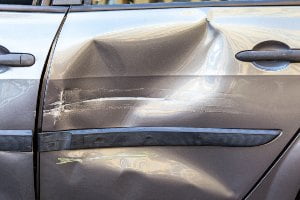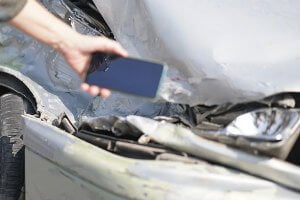Can I File a Lawsuit if My Child Was Injured in a School Bus Crash in Minneapolis?
 School bus crashes are rare, but they do happen, either because of the negligence of the bus driver or another party. Even though school buses are large vehicles, the children who are on board could still suffer significant injuries.
School bus crashes are rare, but they do happen, either because of the negligence of the bus driver or another party. Even though school buses are large vehicles, the children who are on board could still suffer significant injuries.
You need to know what to do if your child is ever involved in a school bus crash. While your focus will be primarily on treating your child’s injuries, you should consider your legal options. Another party may be at fault, which means they may be liable for your child’s medical costs and other damages.
TSR’s Minneapolis auto accident lawyers discuss Minneapolis school bus crash claims below.
No upfront fees or legal obligations. Contact us today: (612) TSR-TIME.
Recent School Bus Crashes in Minneapolis
The numbers say traveling on a school bus is one of the safest ways for your child to get to and from school. The National Highway Traffic Safety Administration says children are eight times safer on a school bus than in other vehicles. However, crashes still happen:
- On January 25, 2023, a school bus driver ran over a six-year-old in a parking lot in Brooklyn Park outside of Minneapolis. The child was hospitalized with non-life-threatening injuries.
- On April 20, 2023, three people were injured when a school bus hit a tree at 40th Street and Cedar Avenue. Two young people and a woman were hospitalized with non-life-threatening injuries.
- On April 24, 2023, a pedestrian was killed by a school bus at about 6:45 a.m. The crash happened close to Cedar Avenue South and 28th Street East.
Who Could be Liable for Your Child’s School Bus Injuries?
Most school bus crashes are caused by the negligence of the driver. Examples of bus driver negligence include:
- Speeding, especially in residential areas
- Drunk or impaired driving
- Drowsy driving
- Distracted driving
- Violating another driver’s right of way
- Running a red light
- Ignoring a stop sign
- Failing to use appropriate caution given the weather (rain, snow, wind, low visibility, etc.)
- Failure to check a blind spot before changing lanes
Sometimes the driver isn’t the only one at fault, or they are only partially to blame. Other parties may have been negligent, and their actions may have caused the crash to occur.
For example, the manufacturer of the bus could be liable for equipment failure, such as brake failure. The repair shop responsible for servicing the bus may have done poor work. Mechanics may have failed to fix a mechanical problem or failed to notice a problem they should have seen.
It is also possible that the entity responsible for hiring the driver failed to conduct a thorough background check. It’s entirely possible that the driver did not have the proper training or qualifications to be operating the bus or maybe had been involved in other crashes and should not have been driving at the time of the crash.
The school district itself may also be held liable if the driver is an employee of the district. A Minnesota Supreme Court ruling in 2007 helped pave the way for school districts to be held liable for injuries to students on school grounds or during school-related activities. Districts cannot use the sovereign entity law to avoid liability.
School districts are required to develop and implement comprehensive written policies about safe transportation of school children. The policy must cover various aspects, including:
- Appropriate student bus safety training
- Intradistrict system to report bus crashes
- Provisions about bus monitor qualifications, duties and training
- Operating rules
- Use and maintenance of type III vehicles, drivers of these vehicles, qualifications to drive these vehicles
- Emergency procedures
- System for maintaining and inspecting equipment
Violations of these policies could expose the district to liability if these violations led to the crash that injured your child.
It is also possible that another driver is liable for the crash. If they were operating their vehicle with negligence, they may be directly linked with the cause of the crash.
Challenges of Proving Liability For a Bus Crash
School districts and other parties that may bear liability are going to fight hard to avoid accountability. It is also going to take a comprehensive investigation to determine who may be at fault. Even if the driver is the only one to blame, your lawyer will need to establish why the crash happened and how it caused your child’s injuries. This may require experts, such as an accident reconstruction expert.
This type of investigation is best left to an experienced lawyer, who will know how to ensure no details are missed. A lawyer can also take formal steps to preserve evidence that may be vital to your claim.
What Should You do if Your Child Was Involved in a Bus Crash?
The first step is to get your child the medical treatment he or she needs. While you may have a legal claim, this is secondary to medical treatment.
Once your child’s injuries have been stabilized, you should contact an experienced lawyer to discuss next steps.
You may be contacted by an insurance company or the school district asking you to sign things or even to accept an offer of compensation. Despite their attempts to rush you into deciding, you can always discuss these decisions with your lawyer. Liable parties often try to rush victims into quick decisions that are not in their best interest.
Compensation For a Minneapolis Bus Crash
Our attorneys are committed to securing full compensation for the injuries and damages your child suffered in the crash. This could include:
- Past and future medical costs
- Long-term care
- Physical therapy
- Rehabilitation
- Pain and suffering
- Special equipment your child needs
- Home or vehicle modifications
- Permanent disability
- Disfigurement
Call TSR Injury Law After a Bus Crash
Unsure where to turn after a school bus crash?
TSR Injury Law has been a tireless advocate for motor vehicle crash victims in Minnesota for decades. When you need legal advice you can trust, give us a call to learn how we may be able to assist you.
We take cases on contingency, which means no upfront costs. We do not get paid unless we secure compensation for you.
TSR Injury Law. Experienced Lawyers. Proven Results. Phone: (612) TSR-TIME.


 Traditional intersections with lights and stop signs have been used to control motor vehicle traffic for over a century. Did you know the first traffic light in the United States was installed in 1912? Although the total number of traditional intersections greatly exceeds the number of roundabouts, the number of roundabouts has steadily increased in recent years.
Traditional intersections with lights and stop signs have been used to control motor vehicle traffic for over a century. Did you know the first traffic light in the United States was installed in 1912? Although the total number of traditional intersections greatly exceeds the number of roundabouts, the number of roundabouts has steadily increased in recent years. Some car crashes are more dangerous than others, putting those involved at a higher risk for severe or fatal injuries. A side-impact crash is one type of collision that can be especially devastating.
Some car crashes are more dangerous than others, putting those involved at a higher risk for severe or fatal injuries. A side-impact crash is one type of collision that can be especially devastating. Every driver involved in a Minneapolis crash is required to stay at the scene to exchange information, render reasonable medical aid to the injured and notify the police so a crash report can be completed.
Every driver involved in a Minneapolis crash is required to stay at the scene to exchange information, render reasonable medical aid to the injured and notify the police so a crash report can be completed.